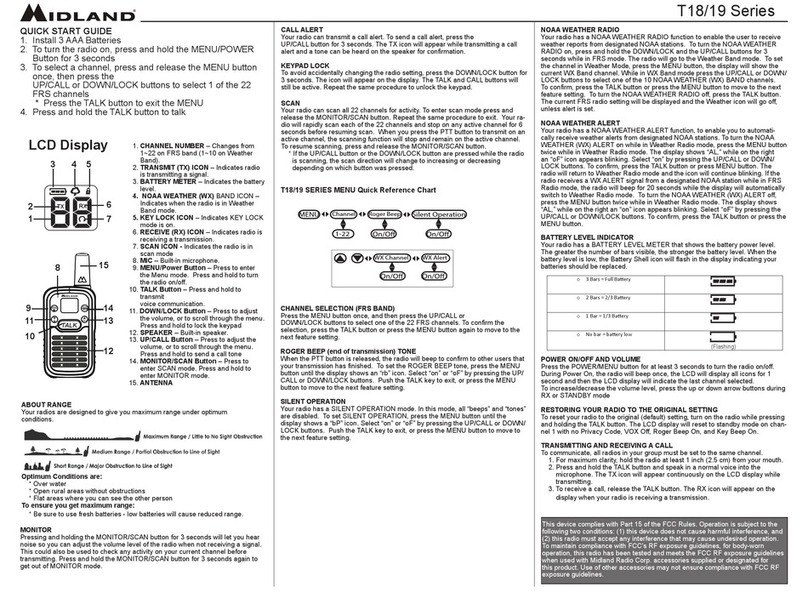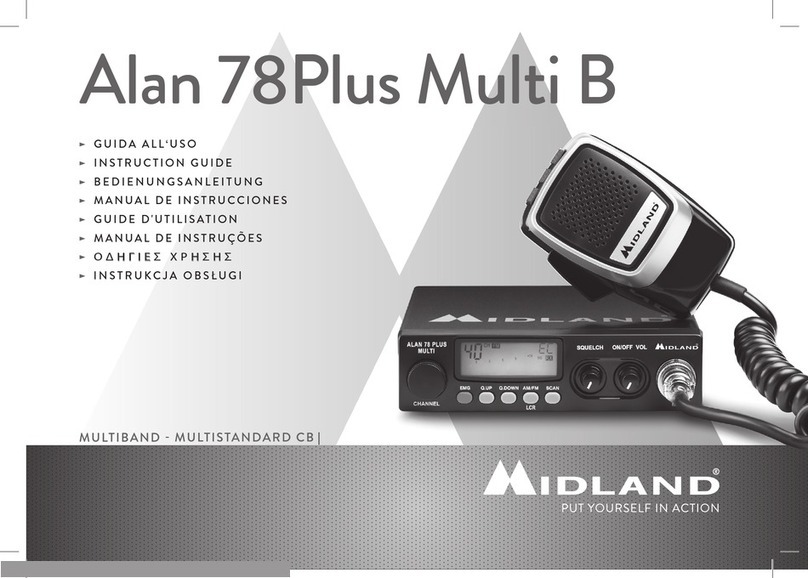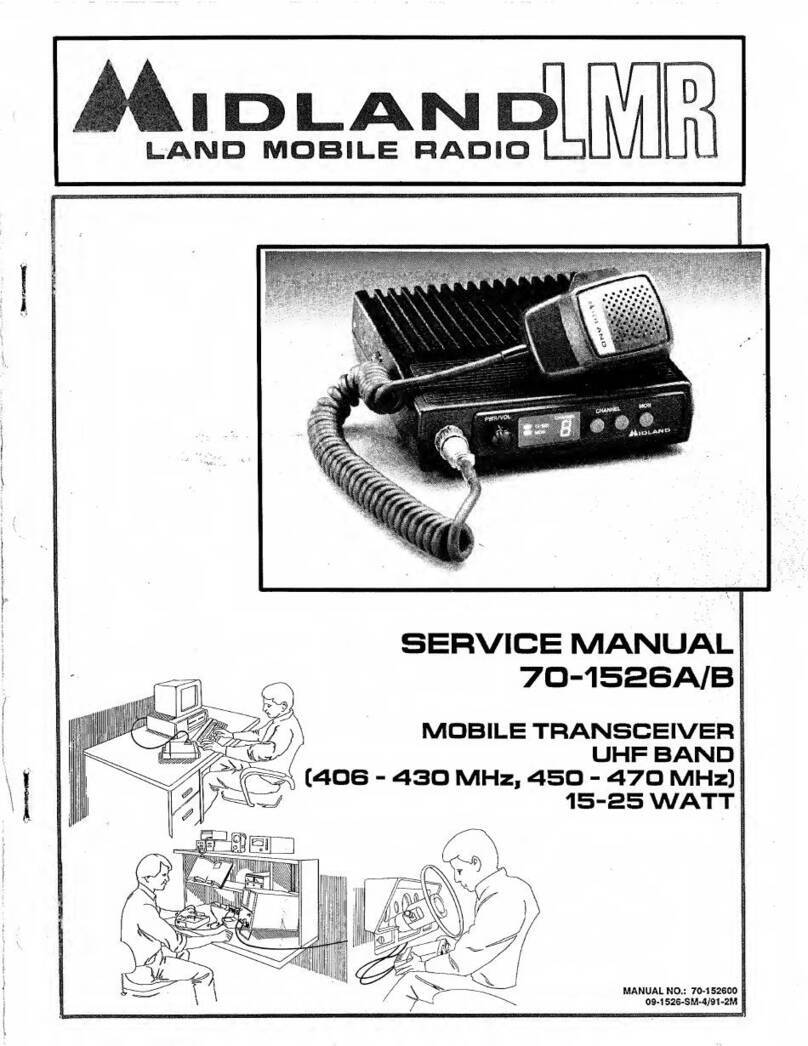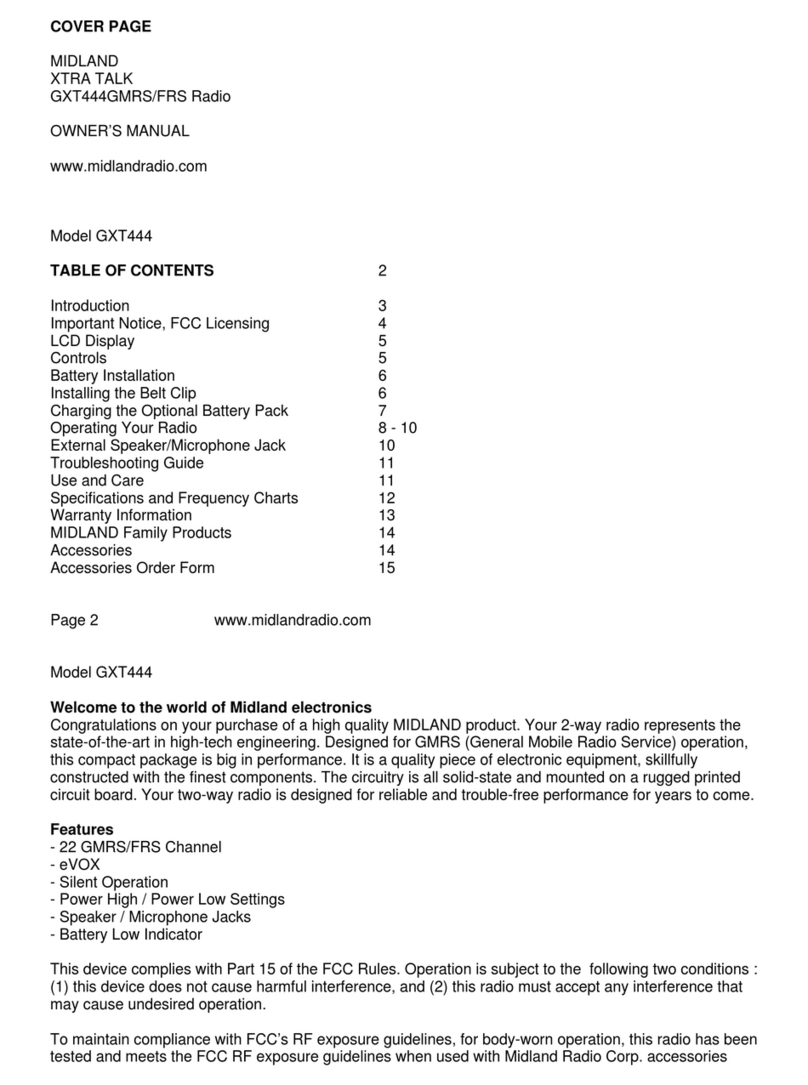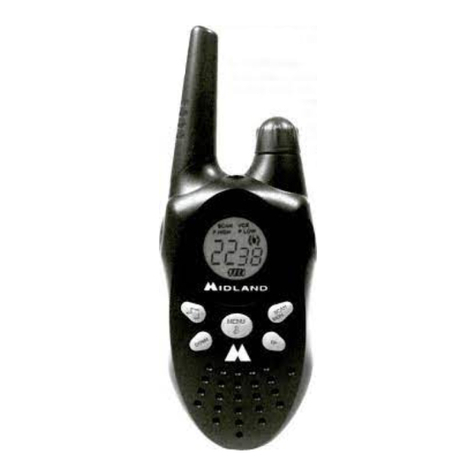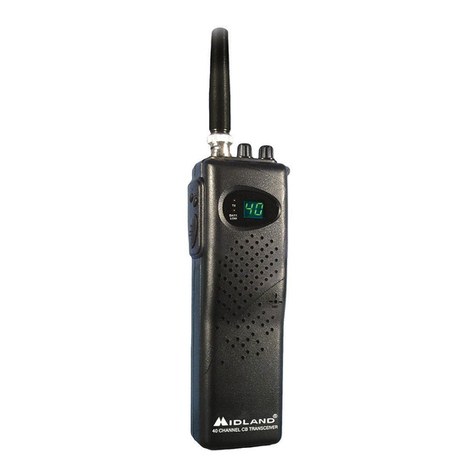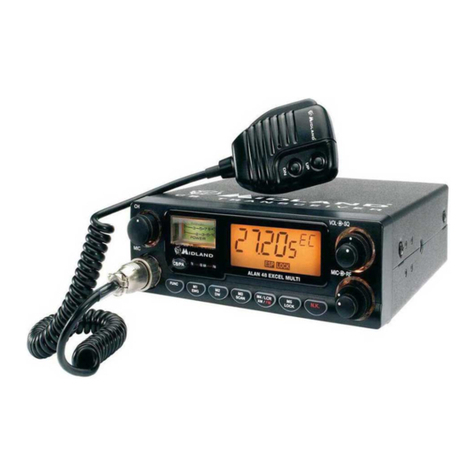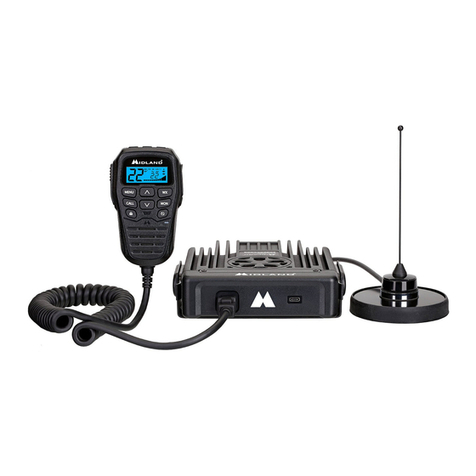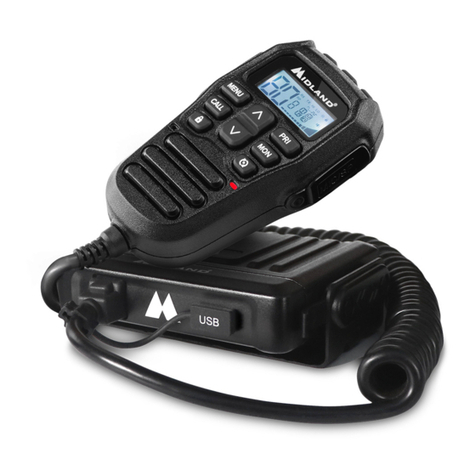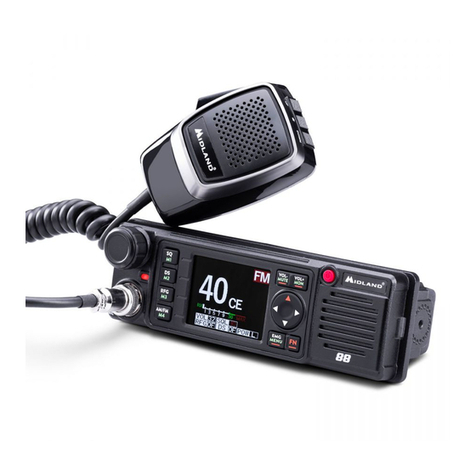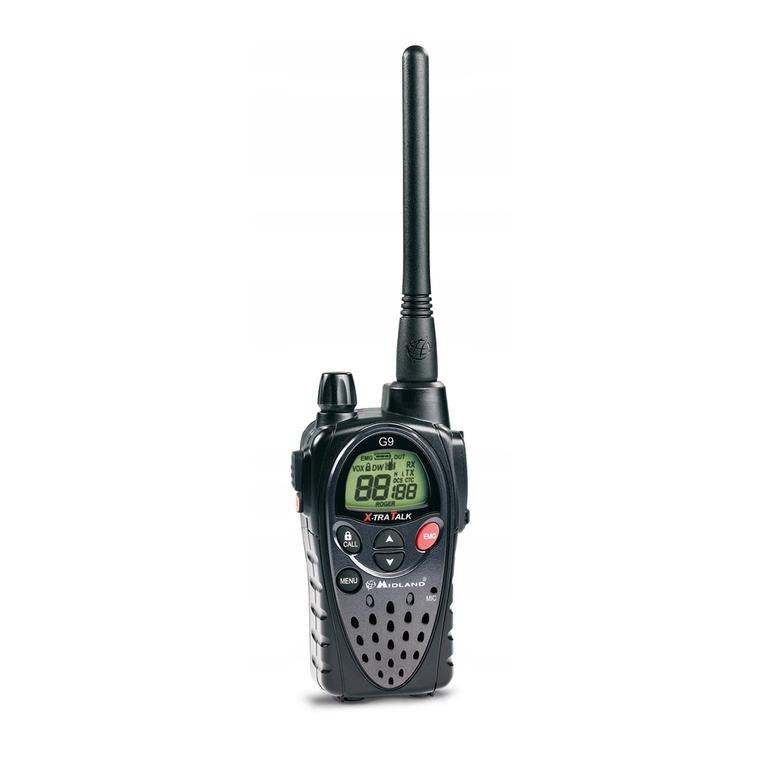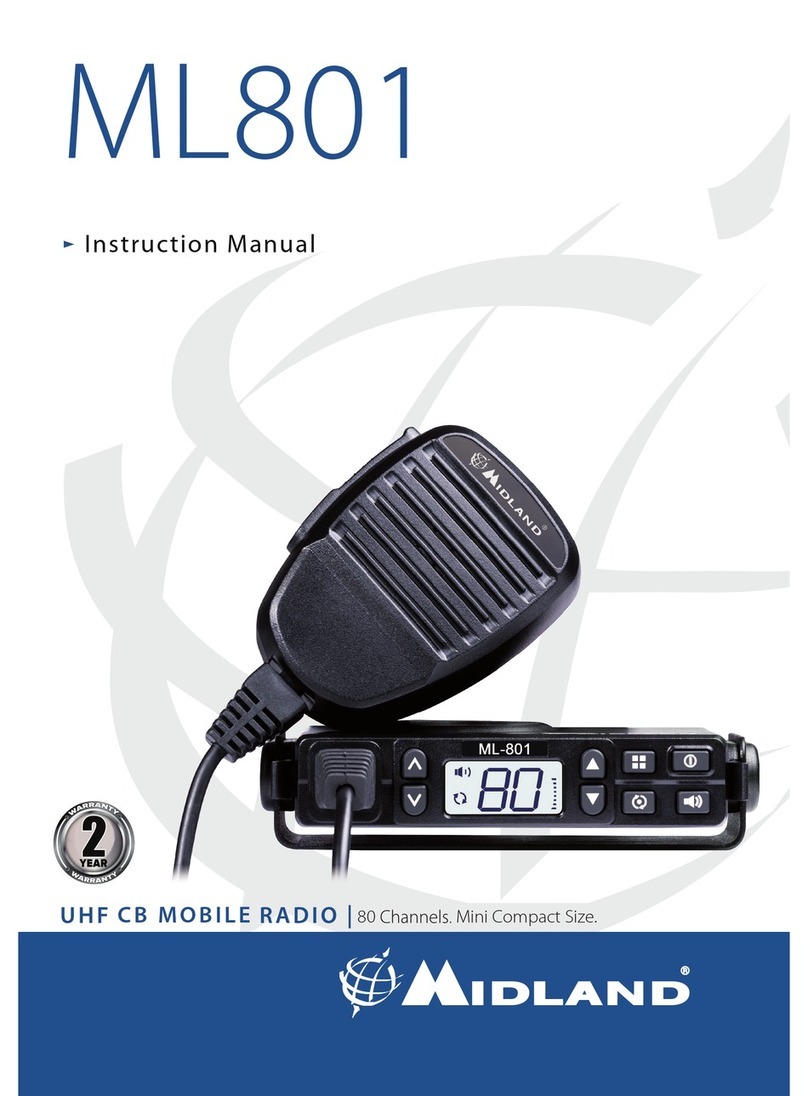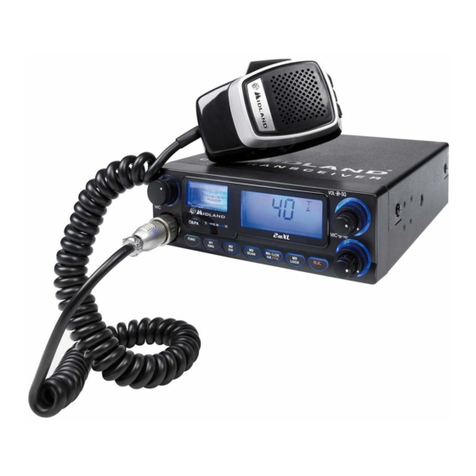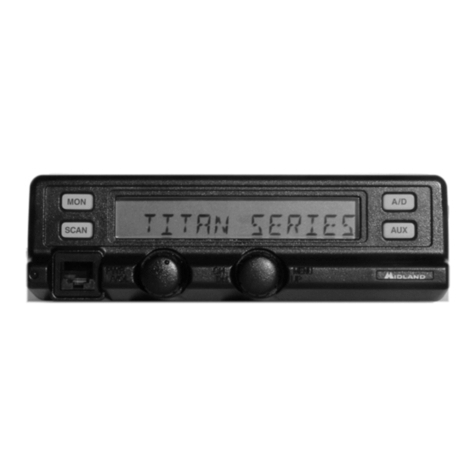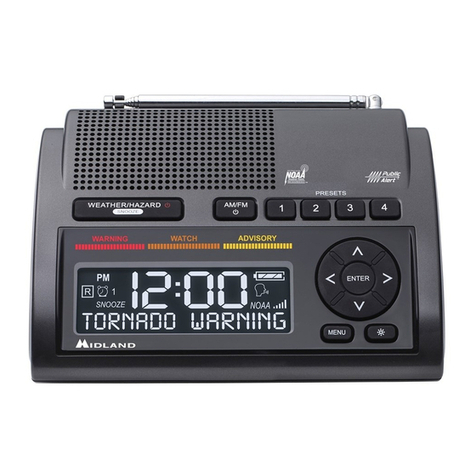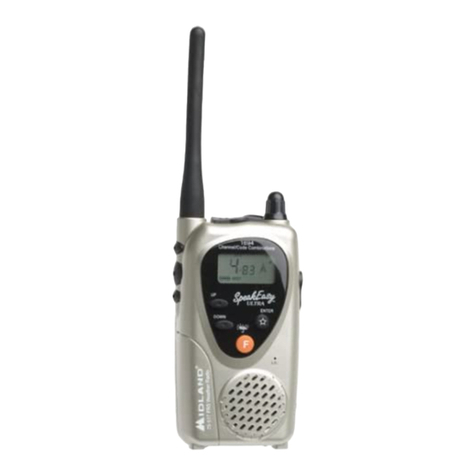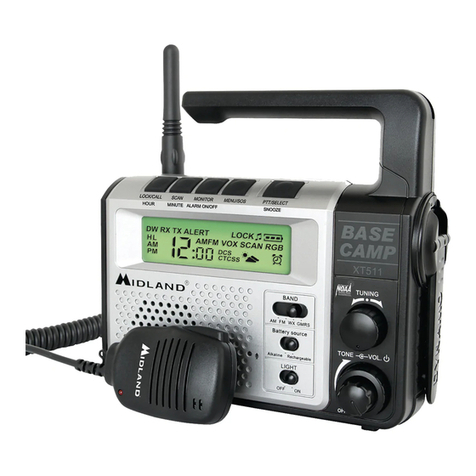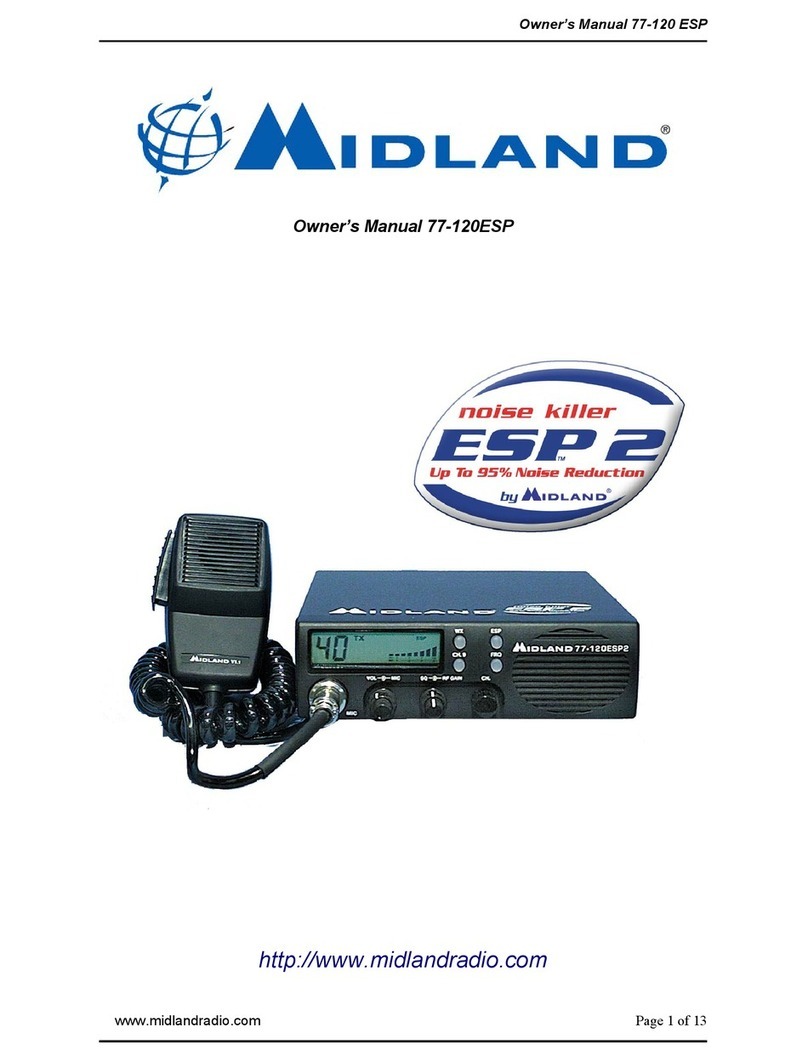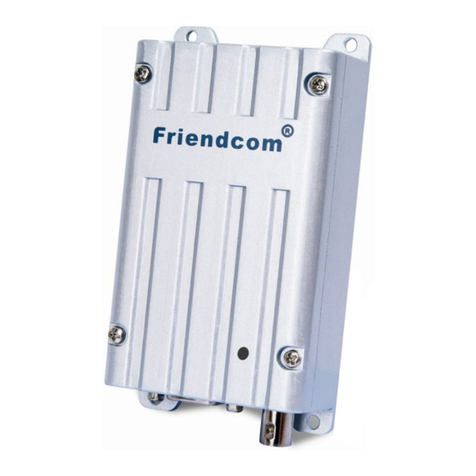Per l’installazione in auto, la tensione a 13,8 Vcc è solitamente prelevabile dal con-
tatto ausiliario dell’interruttore d’accensione. Questo evita che l’apparato possa
rimanere acceso accidentalmente quando l’autista scende dall’auto e permette inol-
tre di poter operare senza che il motore sia in funzione. Prima di operare, installare
e collegare l’antenna inserendo il connettore nell'apposita presa sul retro dell’appa-
rato. Per l’uso di un altoparlante esterno, utilizzare la presa EXT-SPKR.
SOSTITUZIONE DEL FUSIBILE
Sostituire il fusibile del cavo di alimentazione con un similare a 2 A (Un fusibile di
ricambio è in dotazione).
CONNESSIONE DEL MICROFONO
La presa del microfono è situata sul davanti
dell’apparato. Premere il piccolo pulsante
sulla presa microfonica e inserire il microfo-
no. Per toglierlo, ripremere lo stesso pulsan-
te ed estrarre il microfono. Accertarsi sempre
che il connettore sia ben connesso alla presa.
MONTAGGIO ANTENNA
L’antenna è l’elemento più importante per ottenere i migliori risultati. È indispensabile
che l’antenna abbia un’impedenza di 50 Ohm. A seconda della posizione in cui viene
installata, il rendimento varia notevolmente. Usare un cavo coassiale con impedenza 50
Ohm. Sono consigliati i cavi RG 58U per lunghezza sotto i 2.5 metri, oppure RG 8 per
lunghezze superiori. Il cavo coassiale deve essere montato con molta cura: evitare
curve e piegamenti. Inoltre va ricordato che il cavo più corto aumenta la sensibilità del-
l’apparato, così pure un cattivo collegamento tra apparato e antenna.
Consigli:
• Montare l’antenna nel posto più libero e più alto dell’auto.
• L’antenna deve essere installata in posizione verticale, e così deve rimanere anche
quando il veicolo è in moto.
• Montare l’antenna e il cavo il più possibile lontano da fonti di rumore.
• La massa dell’antenna deve coprire un’area di 1m2.
Esistono in commercio diversi tipi di antenna: con stilo a 1/4 d’onda; alimentate al cen-
tro; con carica in base; con carica in alto. Le antenne caricate sono più corte, ma per
un miglior rendimento si consigliano quelle di lunghezza di circa 2 metri.
L’installazione a centro tetto è la migliore in senso assoluto perché il ground o radiale
di terra è proporzionale in tutte le direzioni, mentre su una fiancata o in una qualsiasi
altra parte del veicolo, diventa proporzionale alla massa dello stesso (es: se l’antenna è
installata posteriormente, diventa direttiva in avanti, cioè i segnali provenienti dalla
4
